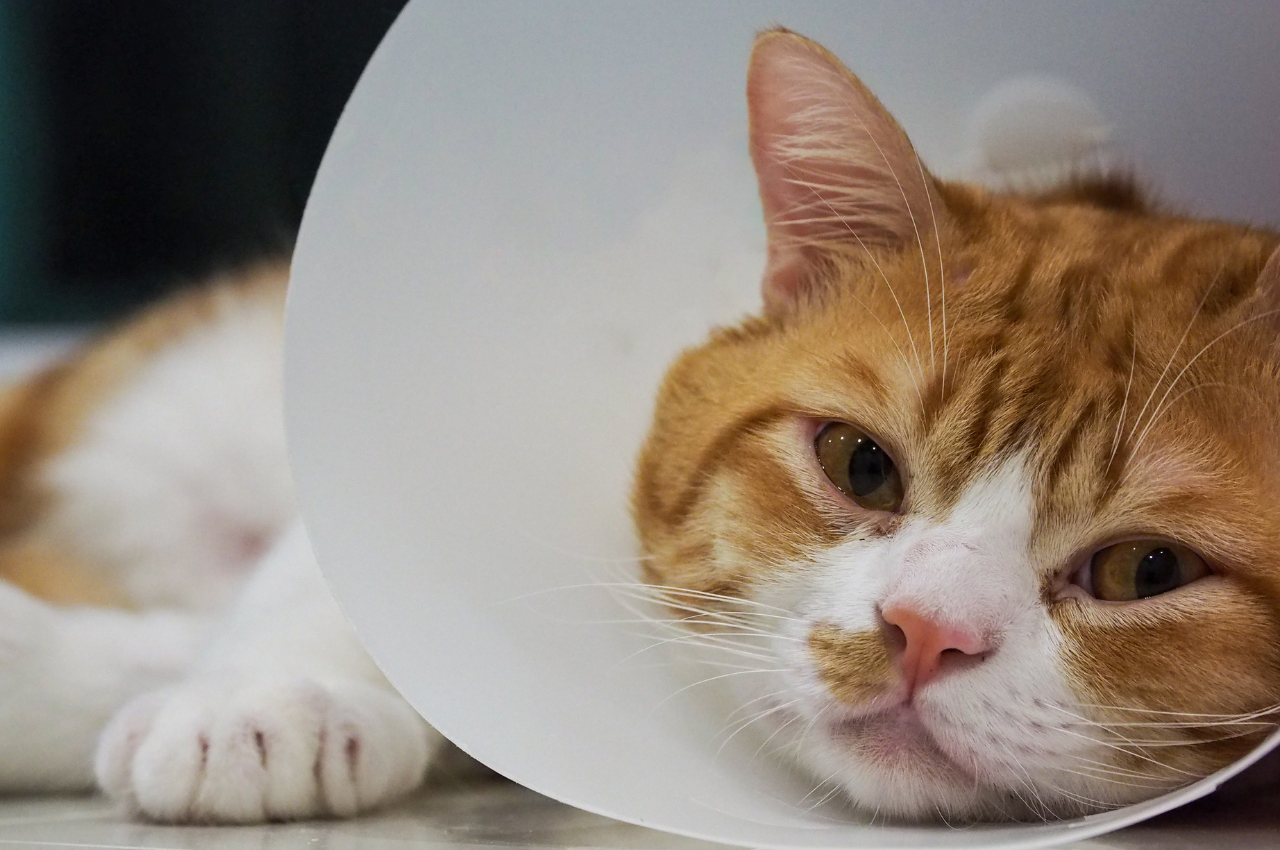When it comes to the health of our furry companions, cats are often thought to be immune to many of the illnesses that affect us humans. However, it may come as a surprise to some that cats can indeed get sick from humans. While it may not be as common as other forms of transmission, such as from other cats or through fleas, it is still a possibility that should be taken seriously.
Understanding the potential for cats to get sick from humans requires a consideration of the various diseases that can be transmitted between our species. One such example is the seasonal flu, which can be passed from humans to cats, resulting in similar symptoms such as coughing, sneezing, and fatigue. Similarly, certain bacterial infections, such as streptococcus and staphylococcus, can also affect both humans and cats. It is vital to practice good hygiene and take necessary precautions to minimize the risk of transmitting any illnesses between ourselves and our feline friends.
Exploring the Interconnected Health of Cats and Humans
As the world is becoming more interconnected, it’s natural for pet owners to wonder if their furry friends can catch illnesses from humans. Many cat owners may have experienced moments of worry, especially when they fell ill. The close bond between cats and their owners often leads to concerns about the transmission of diseases. In this article, we will delve into the topic of whether cats can get sick from humans, exploring various factors and shedding light on common misconceptions.

Before we address this question, it’s important to note that while cats and humans can share some diseases, the likelihood of transmission depends on several factors, including the specific disease, the health status of the individuals involved, and the nature of their contact. Cats have their set of common illnesses, and humans have their own set, but there are instances where diseases can cross species. Let’s explore some of the key factors related to the transmission of diseases between cats and humans.
The most significant factor that determines the transmission of illnesses between cats and humans is the specific disease in question. While some diseases can be shared between the two species, others are species-specific. For example, diseases such as the common cold or the flu are caused by viruses that are unique to humans, ruling out the possibility of transmitting these illnesses to cats. On the other hand, there are diseases, such as certain types of parasitic infections, that can be transmitted between cats and humans.
Factors Affecting Disease Transmission
When it comes to disease transmission, several factors affect whether a cat can get sick from a human or vice versa:
- The specific disease in question
- The health status of both the cat and the human
- The nature and duration of their contact
Factors Affecting Disease Transmission 1. The specific disease in question The type of disease plays a crucial role in determining whether it can be transmitted between cats and humans. Some diseases are specific to one species, while others can be shared. 2. The health status of both the cat and the human The overall health of both the cat and the human is critical. A weakened immune system in either party increases the risk of disease transmission. 3. The nature and duration of their contact The closeness and frequency of contact between cats and humans can influence the transmission of diseases. Close physical contact may increase the risk of transmission.
Understanding these factors is crucial in determining the potential risks and taking appropriate precautions to protect both cats and humans from any possible transmission of diseases.
Diseases that Can Be Transmitted between Cats and Humans
While cats and humans have separate sets of common illnesses, some diseases can be transmitted between the two species. Some of the notable diseases that can be shared include:

- Toxoplasmosis: This is a parasitic infection caused by Toxoplasma gondii. Cats are the primary hosts of this parasite, but humans can contract it through contact with infected cat feces or undercooked meat.
- Ringworm: Contrary to its name, ringworm is not caused by a worm but by a fungal infection. It can be transmitted between cats and humans through direct contact with infected individuals or contaminated surfaces.
- Rabies: Rabies is a severe viral disease that affects the central nervous system. While rare, transmission can occur if a cat bites a human and the cat is infected with the rabies virus.
These are just a few examples of diseases that can be transmitted between cats and humans. Cat owners must be aware of these risks and take appropriate measures to minimize the chances of transmission.
Toxoplasmosis: The Risk and Prevention
Toxoplasmosis is one of the most well-known diseases that can be shared between cats and humans. It is caused by the parasite Toxoplasma gondii, which primarily infects cats but can also infect humans through contact with infected cat feces or undercooked meat.
While toxoplasmosis typically doesn’t cause severe symptoms in healthy individuals, it can be dangerous for pregnant women and individuals with weakened immune systems. It can lead to complications such as miscarriage, stillbirth, or birth defects in unborn babies, as well as serious illness in individuals with compromised immune systems.
Preventing toxoplasmosis involves simple measures such as:
- Washing hands thoroughly after handling cat litter or cleaning litter boxes
- Using gloves when gardening or handling soil that may be contaminated with cat feces
- Feeding cats commercial cat food to minimize the chances of them hunting infected prey
By following these precautions, cat owners can significantly reduce the risk of contracting toxoplasmosis and protect their health as well as their cats.
Rabies: A Rare but Serious Concern
Rabies is a viral disease that affects the central nervous system. It can be transmitted to humans through the bite or scratch of an infected animal, including cats. While rabies is rare in cats, it poses a serious risk to both humans and animals. Vaccination is the most effective way to prevent the transmission of rabies.
If a cat bites or scratches a human and there is a concern about the possibility of rabies, it’s important to consult a healthcare professional immediately. Prompt medical attention is crucial in such cases to prevent the onset of the disease.
It’s also worth noting that indoor cats have a significantly lower risk of contracting rabies since they are less likely to encounter rabid animals.
Precautions to Reduce the Risk of Transmission
While the risks of cats getting sick from humans or vice versa are relatively low, it’s still important to take appropriate precautions to minimize the chances of disease transmission. Here are some general guidelines:

- Maintain good hygiene by washing hands regularly, especially after handling cat litter or cleaning litter boxes.
- Keep cats vaccinated and up to date with preventive healthcare, including regular check-ups.
- Keep cats indoors to reduce their exposure to potential sources of illness and lower the risk of encounters with infected animals.
- Avoid close contact or sharing food with cats when you are feeling unwell, especially if you have symptoms of a contagious illness.
Frequently Asked Questions
Can cats get sick from humans? This is a common concern among pet owners. While cats can get sick from certain diseases, the risk of them catching illnesses from humans is relatively low. However, it’s always important to practice good hygiene and take necessary precautions to protect both you and your feline friend.
1. Is it possible for a cat to catch a cold from a human?
Cats cannot catch the common cold from humans. The viruses that cause the common cold in humans are species-specific, meaning they only affect humans. Cats can, however, develop respiratory infections caused by certain viruses, such as feline herpesvirus or feline calicivirus, which have similar symptoms to the common cold.
If you are sick with a cold or respiratory infection, it’s always a good idea to limit close contact with your cat to minimize the risk of spreading any potential illnesses. Wash your hands frequently, cover your mouth and nose when coughing or sneezing, and avoid letting your cat lick or come into contact with your face.
2. Can cats get the flu from humans?
The flu virus, specifically influenza A and influenza B, is highly contagious among humans but does not typically affect cats in the same way. Cats can, however, contract certain strains of influenza, such as H1N1, H3N8, or H5N1, from other cats or sometimes from birds. These strains can cause flu-like symptoms in cats.
To prevent the transmission of flu viruses, it’s important to practice good hygiene and avoid close contact with your cat if you have flu symptoms. Wash your hands thoroughly before interacting with your cat and avoid sharing food or utensils. If your cat shows signs of illness, consult a veterinarian for appropriate care.
3. Can cats catch other illnesses from humans?
While the risk is generally low, some illnesses can potentially be transmitted from humans to cats. For example, certain bacterial infections, such as streptococcus or staphylococcus, can be shared between humans and cats. It’s important to practice good hygiene, such as washing your hands, to minimize the risk of spreading these infections.
Additionally, some parasites, such as fleas or ticks, can be brought into the home by humans and then transmitted to cats. Regular flea and tick prevention for both humans and pets can help prevent these infestations. It’s always a good idea to consult with a veterinarian if you have any concerns about potential illnesses or parasites.
4. How can I protect my cat from getting sick from humans?
To protect your cat from potential illnesses that can be transmitted from humans, it’s important to practice good hygiene habits. Wash your hands frequently, especially before interacting with your cat or handling their food and water bowls. Avoid close contact with your cat if you are sick, and take necessary precautions to prevent the spread of any potential illnesses.
Regular veterinary check-ups and vaccinations are also crucial in keeping your cat healthy and protected from common feline diseases. Additionally, provide your cat with a clean and sanitary living environment, and take measures to prevent external parasites, such as fleas and ticks, from infesting your home.
Conclusion
While cats and humans can share some diseases, the risk of transmission depends on various factors. It’s crucial to understand the specific diseases that can be transmitted between the two species and take appropriate precautions to minimize the chances of transmission.
By practicing good hygiene, keeping cats vaccinated and healthy, and following preventive measures, cat owners can ensure the well-being of both their feline companions and themselves.
